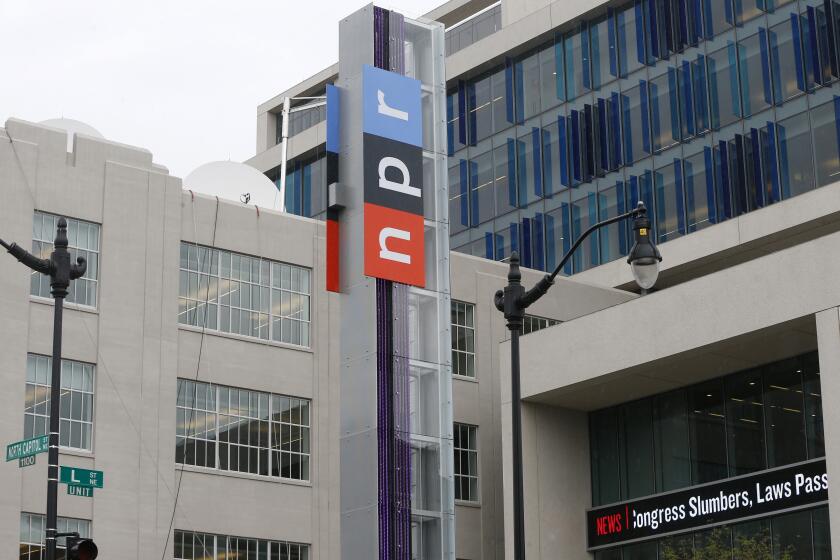FAQs: The Times’ endorsement process for the Nov. 4 elections

- Share via
It’s not official but certainly feels true: California will have more elections this year than rainy days. The current downpour lasts from the first week in October, when vote-by-mail ballots for the statewide general election become available, through election day, Nov. 4.
The election’s top draw is Gov. Jerry Brown’s bid for a fourth term and Republican challenger Neel Kashkari’s campaign to stop him. Further down the ballot are the seven other statewide races and contests for every Assembly seat and half of the state Senate, plus the state Board of Equalization. Members of Congress, too, are up for election. Under California’s top-two system, each race includes only the two contenders who received the highest number of votes in the June primary regardless of their political party affiliations.
Voters will also see six statewide ballot measures. The Legislature is responsible for Proposition 1, a water bond, and Proposition 2, the so-called rainy-day fund.
Another four measures were put on the ballot by voter petition. Proposition 45 deals with health insurance, Proposition 46 with medical malpractice damage awards, and Proposition 47 with criminal sentences. Proposition 48 is a referendum that asks voters whether they want to ratify or reject an Indian gaming compact.
It’s a big election for Los Angeles County voters, who will choose a new sheriff and a new assessor in the hope of turning around those two troubled departments. Voters in one district already elected Hilda Solis to the Board of Supervisors to succeed Gloria Molina; voters in another will choose between Sheila Kuehl and Bobby Shriver to replace Zev Yaroslavsky.
Two of June’s judicial races produced runoffs for the Los Angeles Superior Court. There are also retention elections, in which voters are asked to say yes or no instead of choosing among candidates. Three of the state’s seven Supreme Court justices are up for retention, as are 11 justices of the 2nd District Court of Appeal.
County voters also have Measure P, a property tax to fund parks, recreation and other programs. Other jurisdictions — cities, school districts, water districts — have measures as well.
So what, exactly, is the 2nd District Court of Appeal, and why are some of its justices on the ballot? Why do the propositions jump from numbers 1 and 2 to 45? Will the rainy-day fund make it rain (no) and will the water bond pay for dams (well, maybe yes and maybe no)? What does the Board of Equalization equalize? The Times editorial writers will grapple with many such questions on the Opinion L.A. blog and on the editorial page, along with our voting recommendations. We don’t pretend to have all the answers. We won’t, for example, endorse candidates for the Board of Equalization. But we’ll tell you why we won’t, and we will endorse in many of the other races.
In the meantime, here are some answers to some frequently asked questions about The Times’ endorsement process.
FAQs:
How do you decide which candidates and ballot committees to interview?
First we picked the offices in which we planned to endorse, and after that, it was easy — because there are only two candidates per office. In those races in which our choice in the primary made it to the general election, we did not go through the exercise of re-interviewing the candidates unless one of them asked to be reconsidered.
The process was far less time-consuming than it was for the primary, when The Times invited in each candidate who qualified for the ballot.
For the ballot measures, we invited the official committees for and against each proposition to make their case. For those measures that had no committees, we turned to the people who signed the ballot arguments.
How do you determine whether to support or oppose ballot measures?
We spend a lot of time with the actual language of the measure, listen to the arguments of the official proponents and opponents, ask them lots of questions, ask others lots of questions, then try our best to set aside the campaign slogans and assertions and figure out whether each measure would on the whole be good or bad for California. Then we do our best to explain to readers how we arrived at our conclusions.
When will you publish your endorsements?
The Times began publishing its endorsements the second week of September and will conclude well in advance of election day and, to the extent possible, in advance of the vote-by-mail election that begins in October. Cumulative lists of our choices together with the editorials explaining them appear at latimes.com/endorsements. Complete rosters of our endorsements will appear in print prior to and on election day.
What about the Assembly and state Senate?
The Times endorses selectively and will not endorse in this year’s state legislative races.
So what does the Board of Equalization equalize?
The name of the board goes back to the time when most of the state’s revenue came from property taxes, which were based on appraisals made by elected county assessors. The board was created to ensure that the assessors used uniform practices and to in turn equalize the property tax burden among counties. Today the board supervises an agency that administers many tax and fee programs and hears tax appeals.
Follow the Opinion section on Twitter @latimesopinion
More to Read
A cure for the common opinion
Get thought-provoking perspectives with our weekly newsletter.
You may occasionally receive promotional content from the Los Angeles Times.






